
“This must be a new experience for you to see the grand home of rich people”, I said to the British family joining us on our first tour. Hearst imagined The Enchanted Hill not as a house or even a single structure. His model was a small Spanish town with

“This must be a new experience for you to see the grand home of rich people”, I said to the British family joining us on our first tour.
Hearst imagined The Enchanted Hill not as a house or even a single structure. His model was a small Spanish town with a church at its center surrounded by a plaza where folks could stroll in the evening. Ringing the plaza would be the “village homes”. In this case, guest houses.
During construction, this vision expanded to include elements of Italian and classical Roman architecture, along with random artifacts from Egypt, Persia and others.
Is a guy who bought everything from ceilings to sarcophagi and banged them together to form a grand European mash-up to be admired? Think about what you see and I’ll give you my opinion at the end of this post.
The tours run like clockwork – a very impressive operation by the California Parks Department. We were dropped off on one side of the hill and collected an hour later by a bus waiting on the other side. Drop-offs were staged to avoid collision between different tours.

The guides on all three of our tours were outstanding. They were knowledgable, interesting and covered everything at an even, unhurried pace. Better, they seemed to like their jobs and dealing with people.

The rear of the largest on the three guest houses. Hearst lived here at the end of his life.
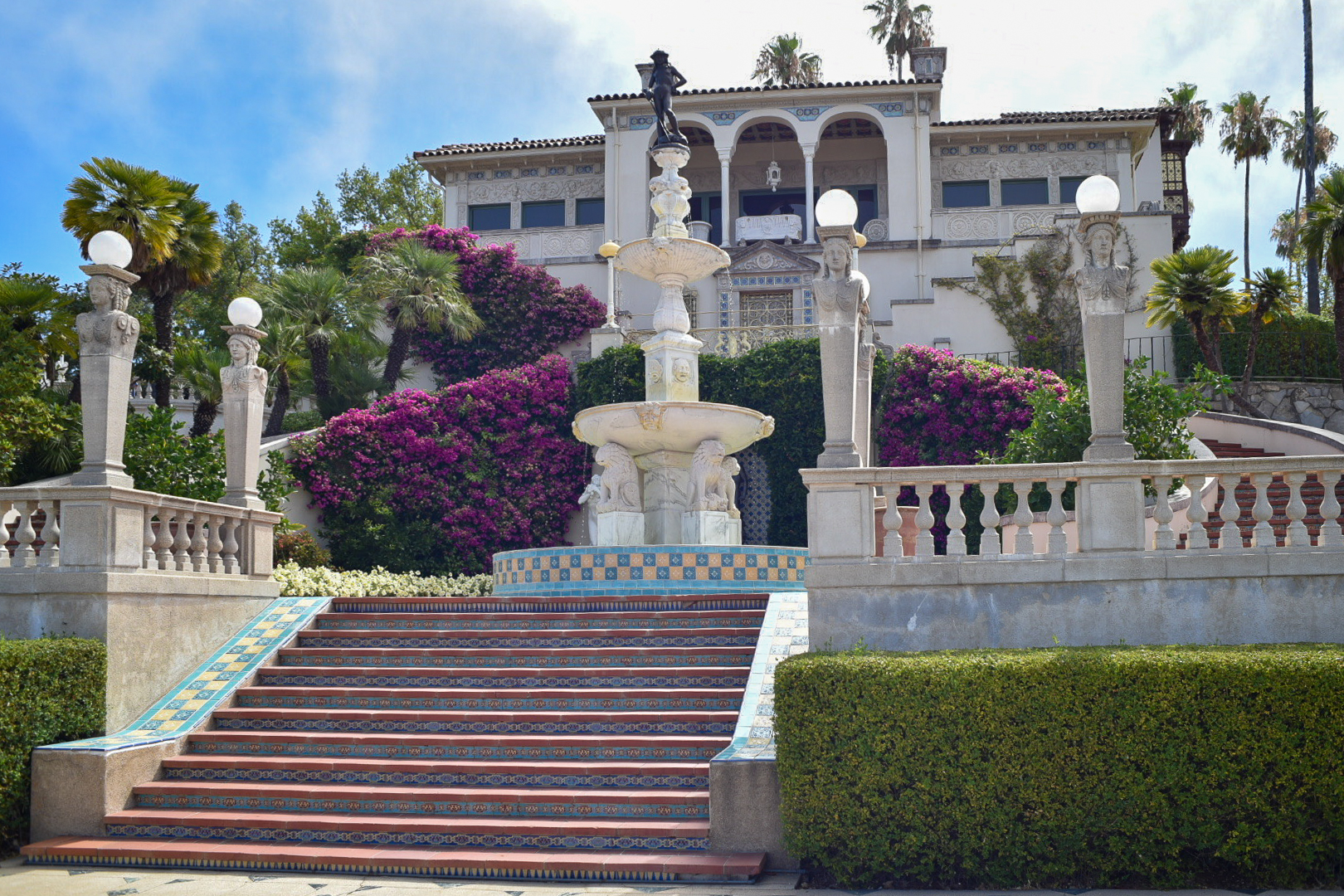
This screened balcony looks like it could be in Venice or perhaps a Moorish palace.

“Buy me some of them Egyptian statues and make a fountain out of ’em!”

One of the three guest houses that make up the “village” at Hearst Castle.
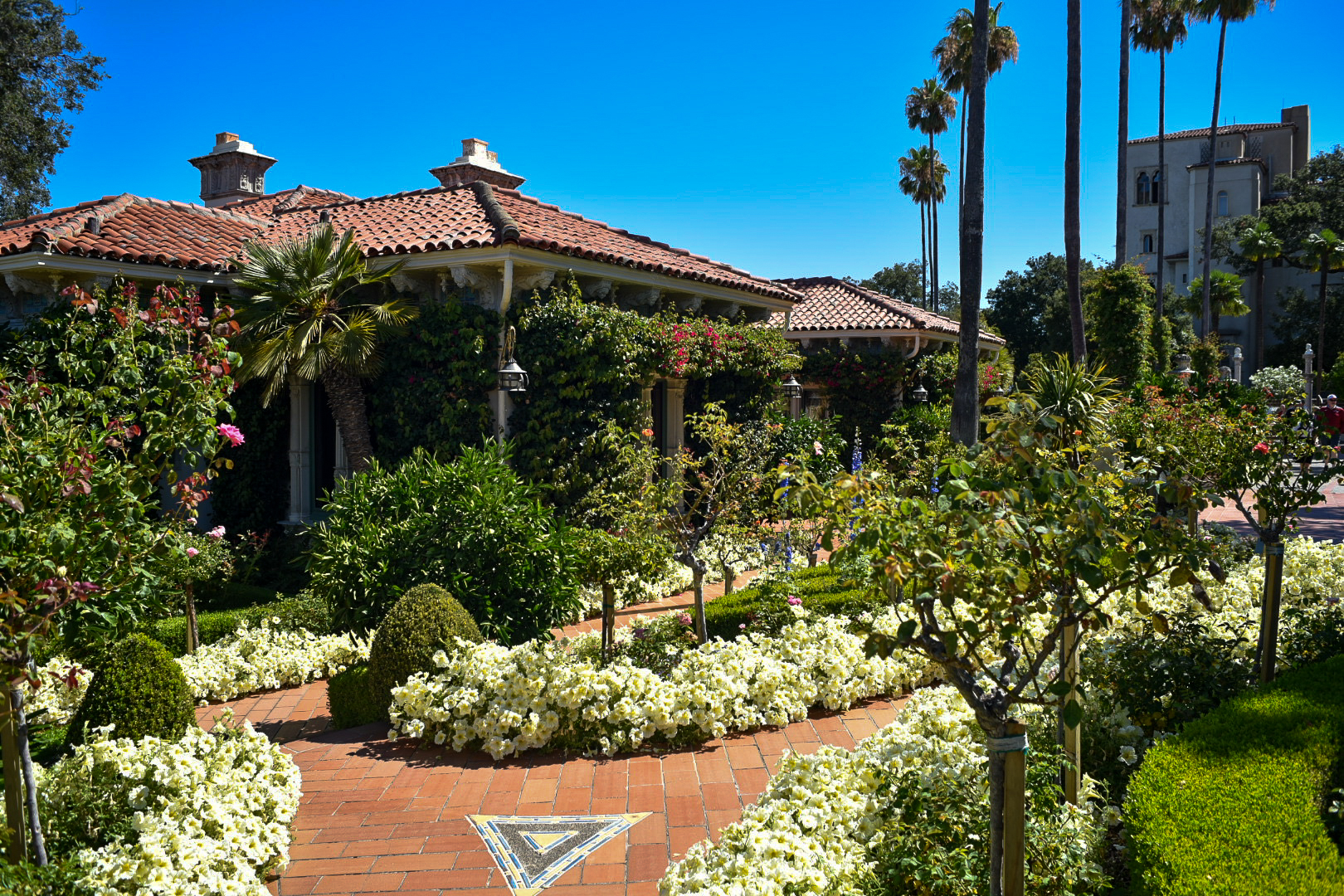
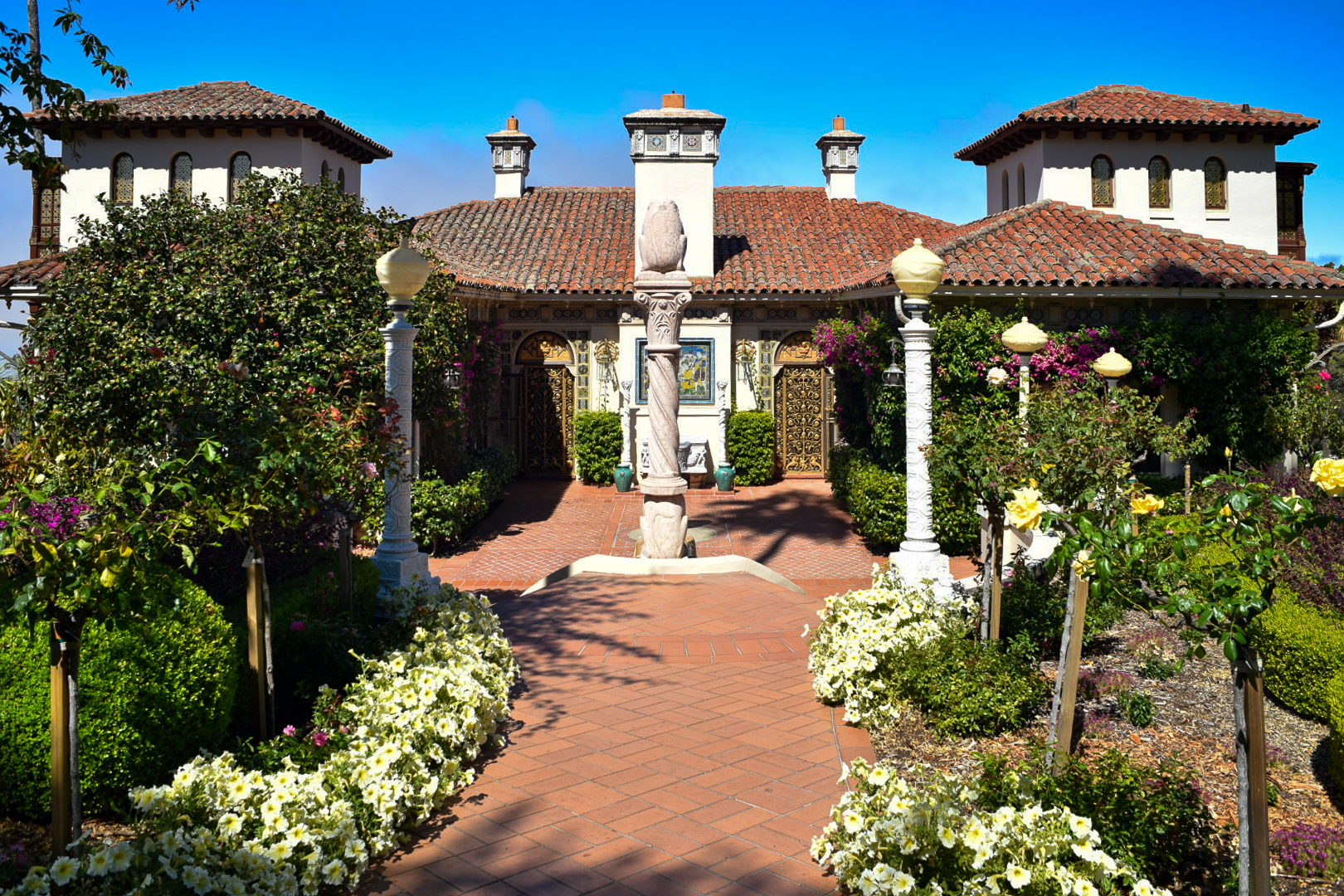
It is said that Hearst enjoyed the building process far more than the results. He must have driven Julia Morgan crazy by making additions and revisions. This continued to his death with several projects left unfinished.
Here we see one of the church-like bell towers on the main house. The towers were revised several times as the house morphed from two floors to four. That’s the main entrance behind the gilded iron bars.
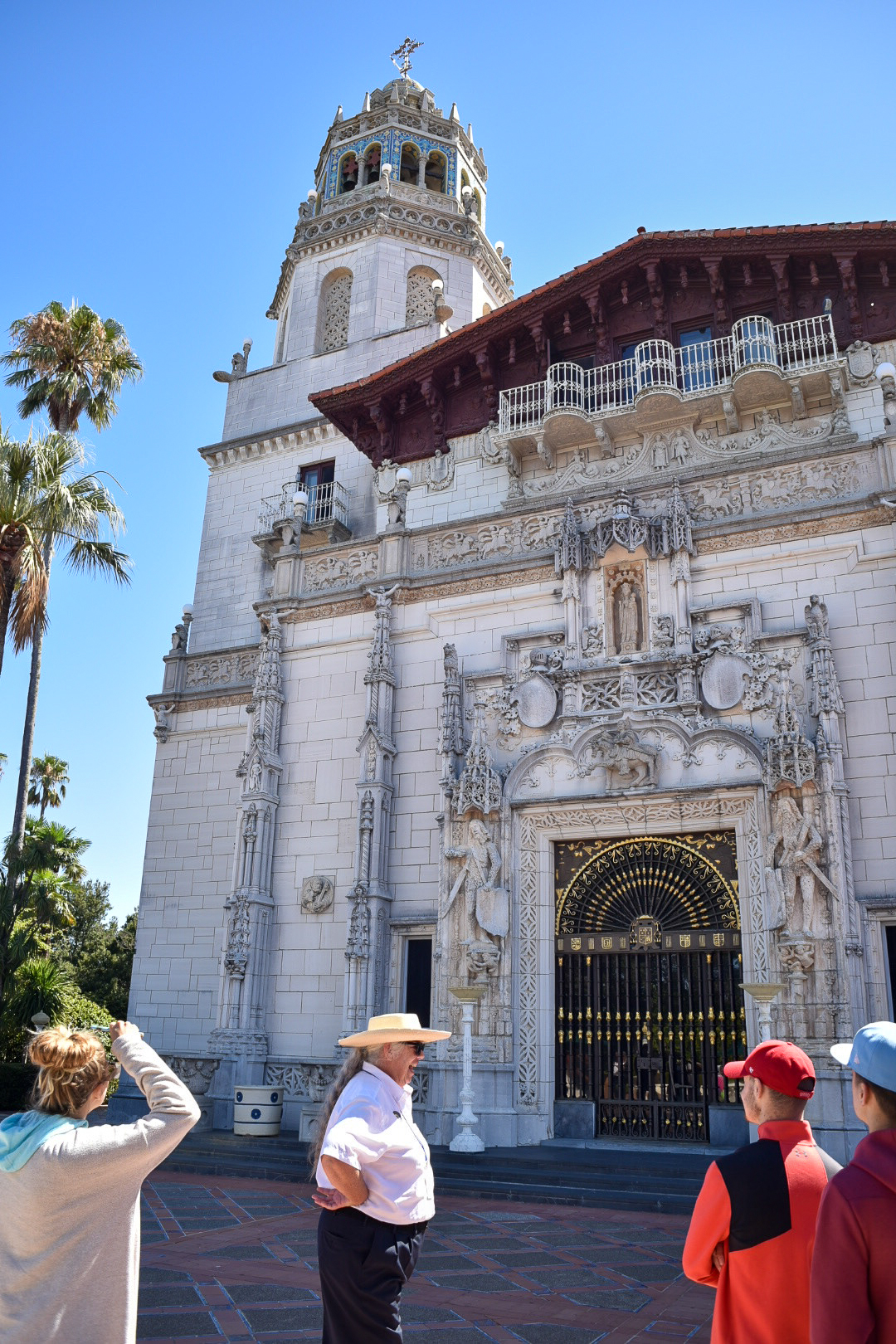

Guests entering through the main door (we did not) would have walked across this beautiful mosaic floor in order to enter the Assembly room.
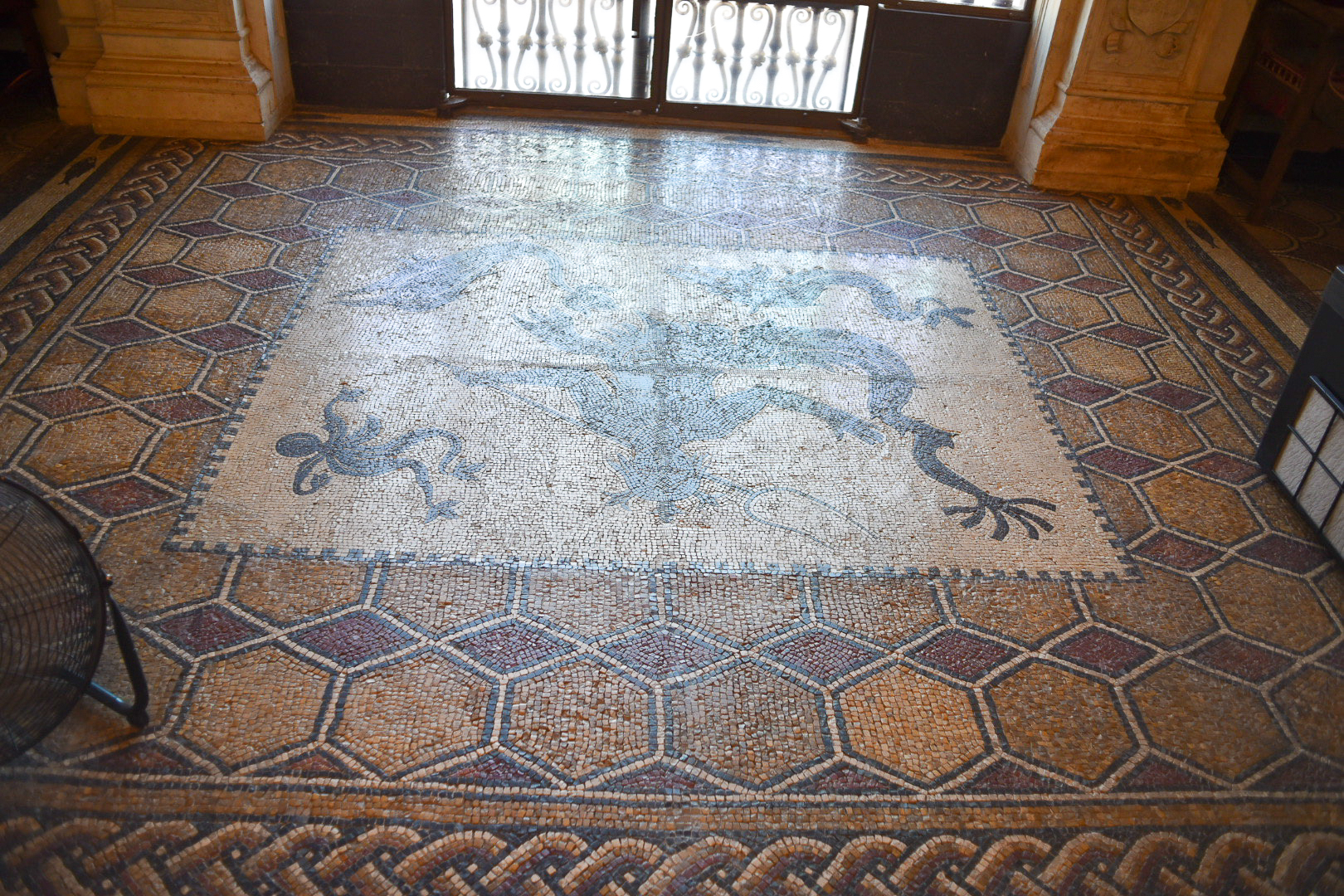

Guests would gather in the Assembly room before dinner. Moguls, movie starts, scientists, politicians – anyone who caught Hearst’s attention – could get to know each other here.
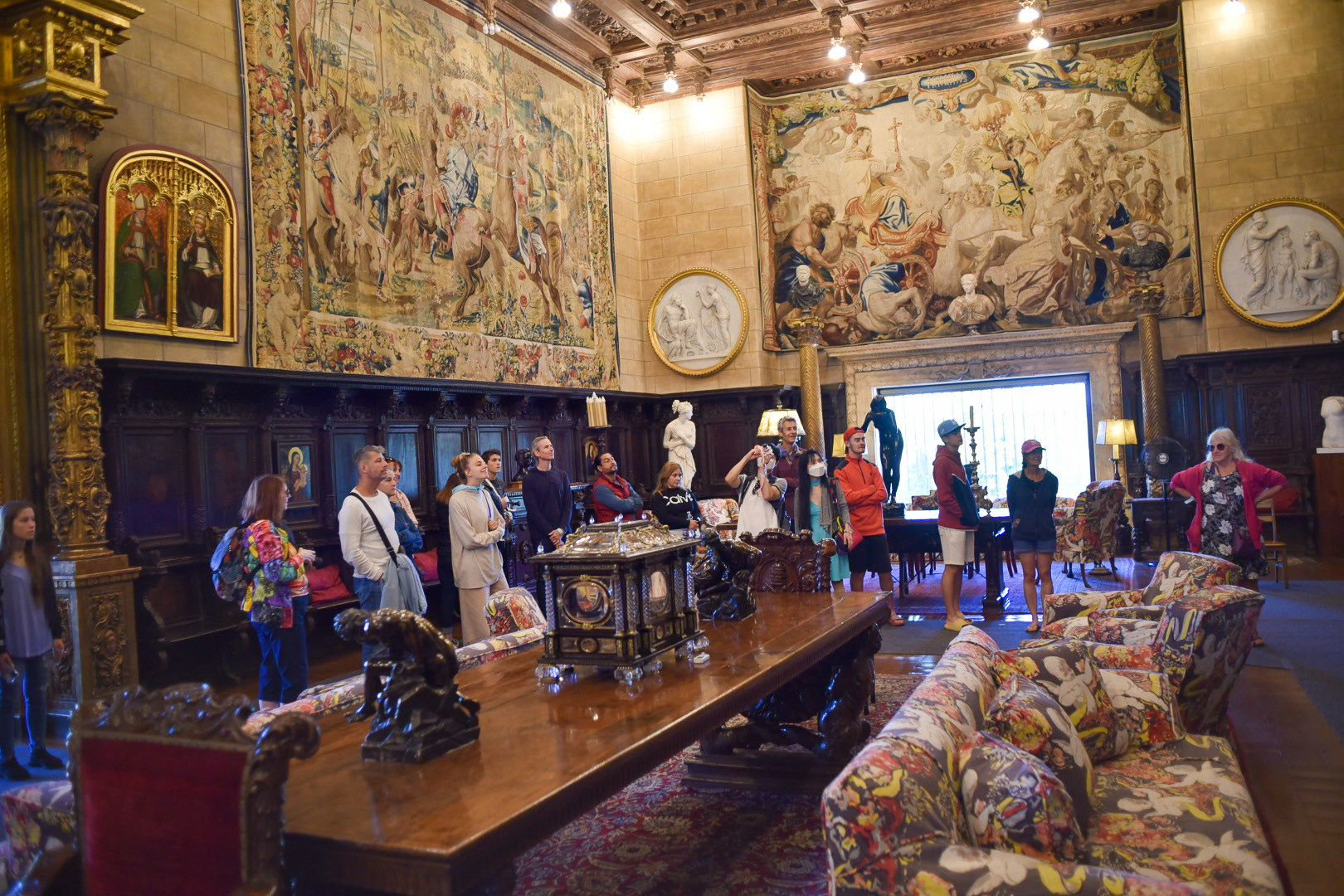
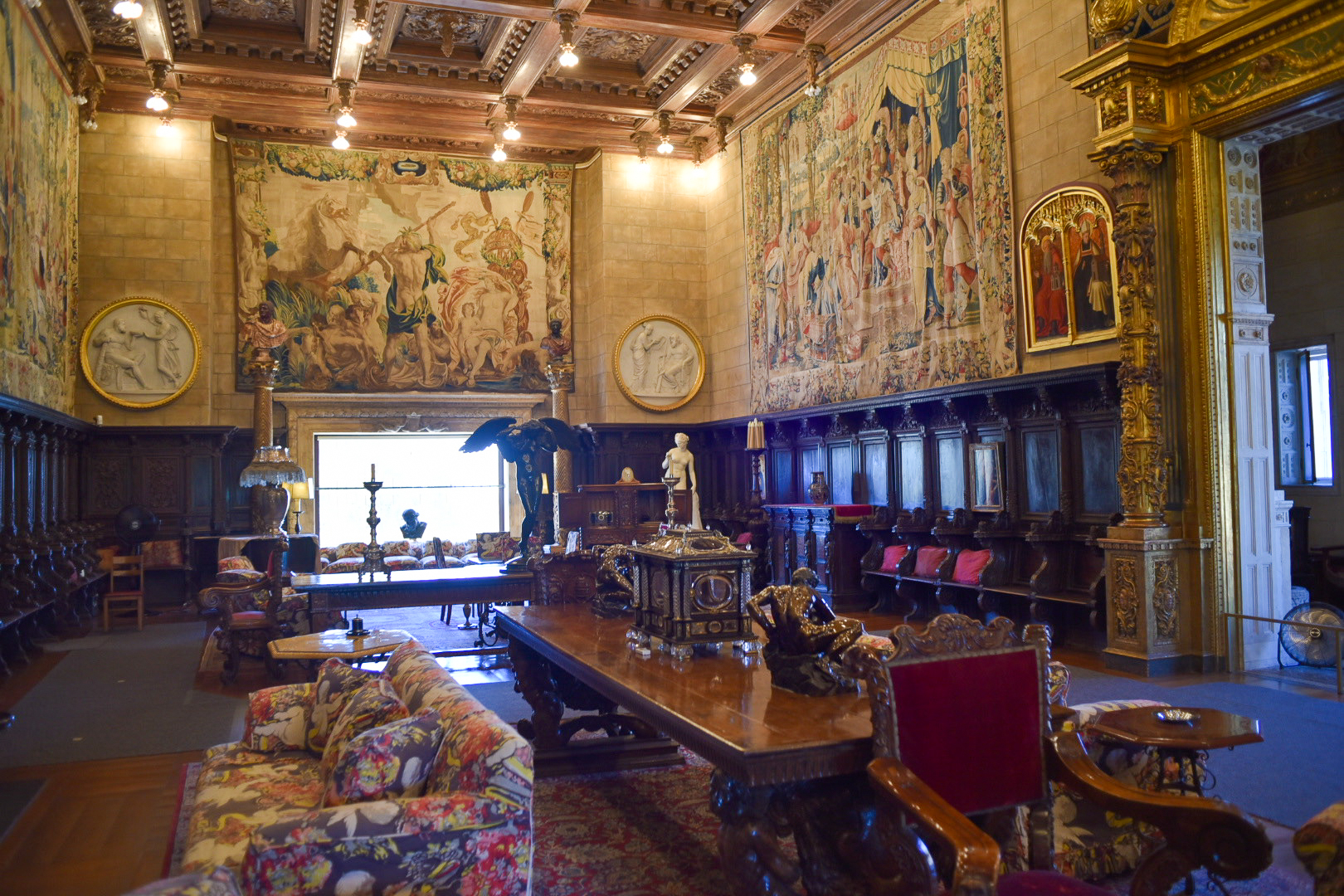
Church pews? Sure, why not?
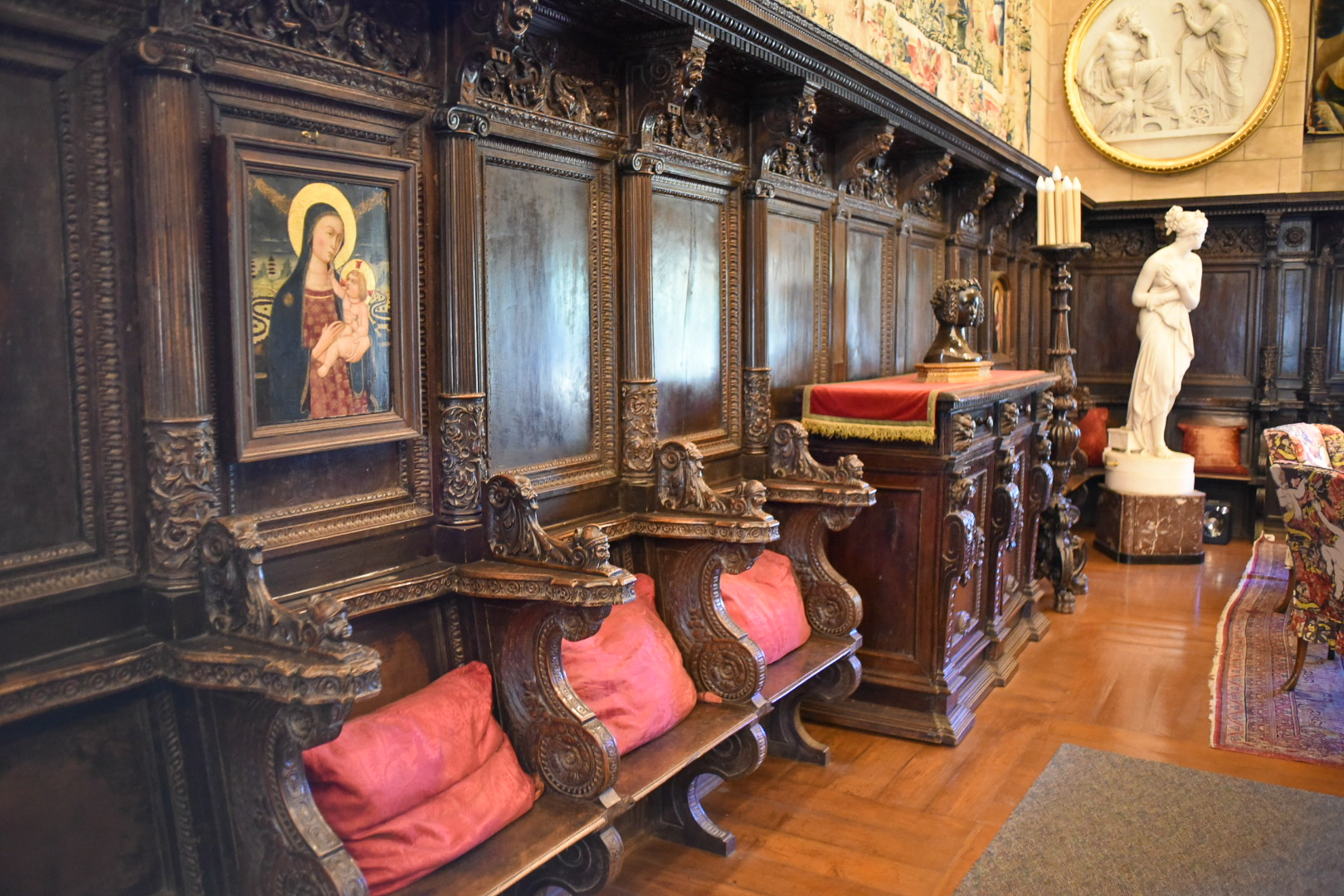
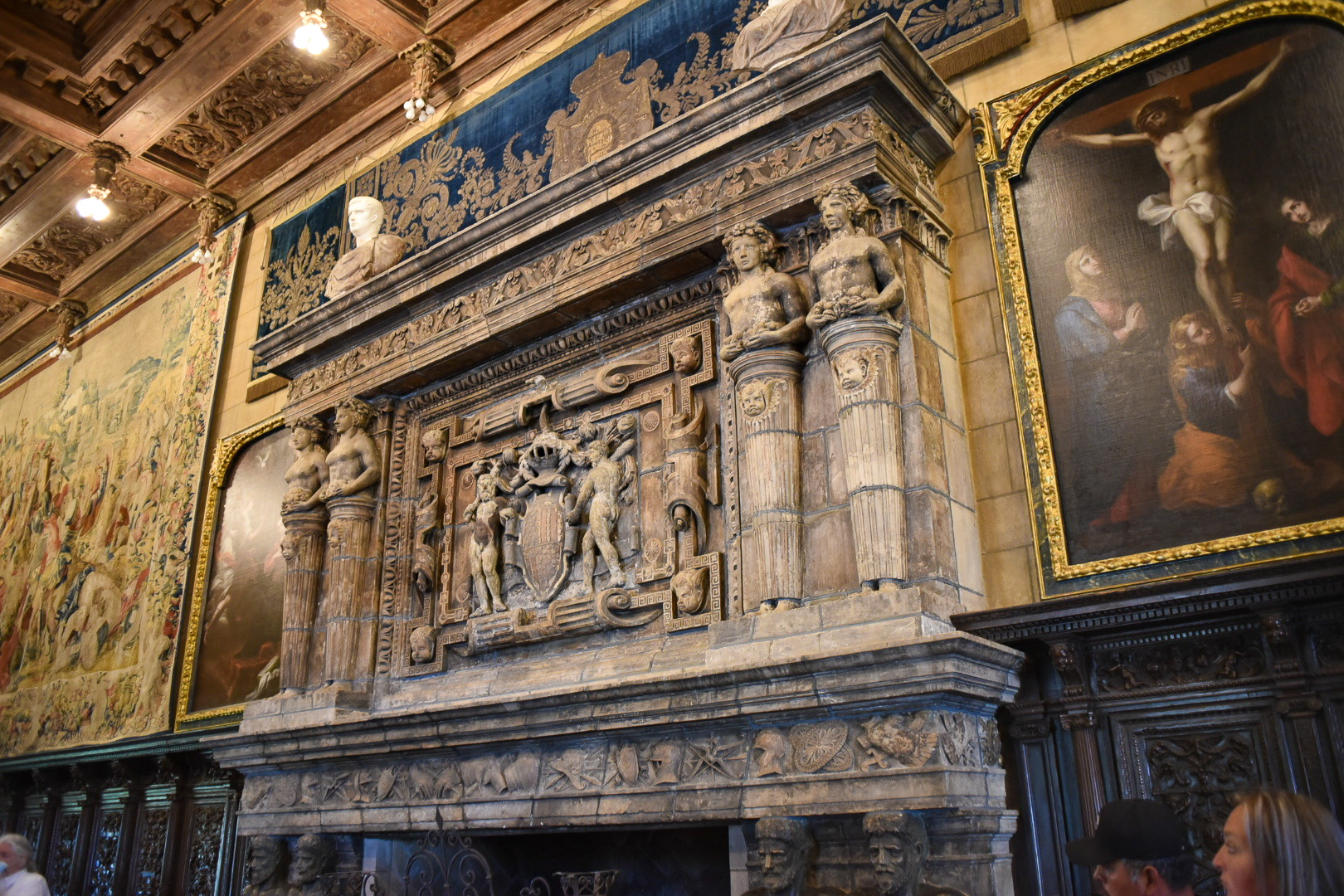
When it was time to dine, guests would enter the Dining room through the same door we are using. The original room was shorter. The tapestry abutted the fireplace. For some reason Hearst didn’t want a door below a tapestry, so Ms. Morgan had to engineer an extension to the room so that a painting could be placed above the door.
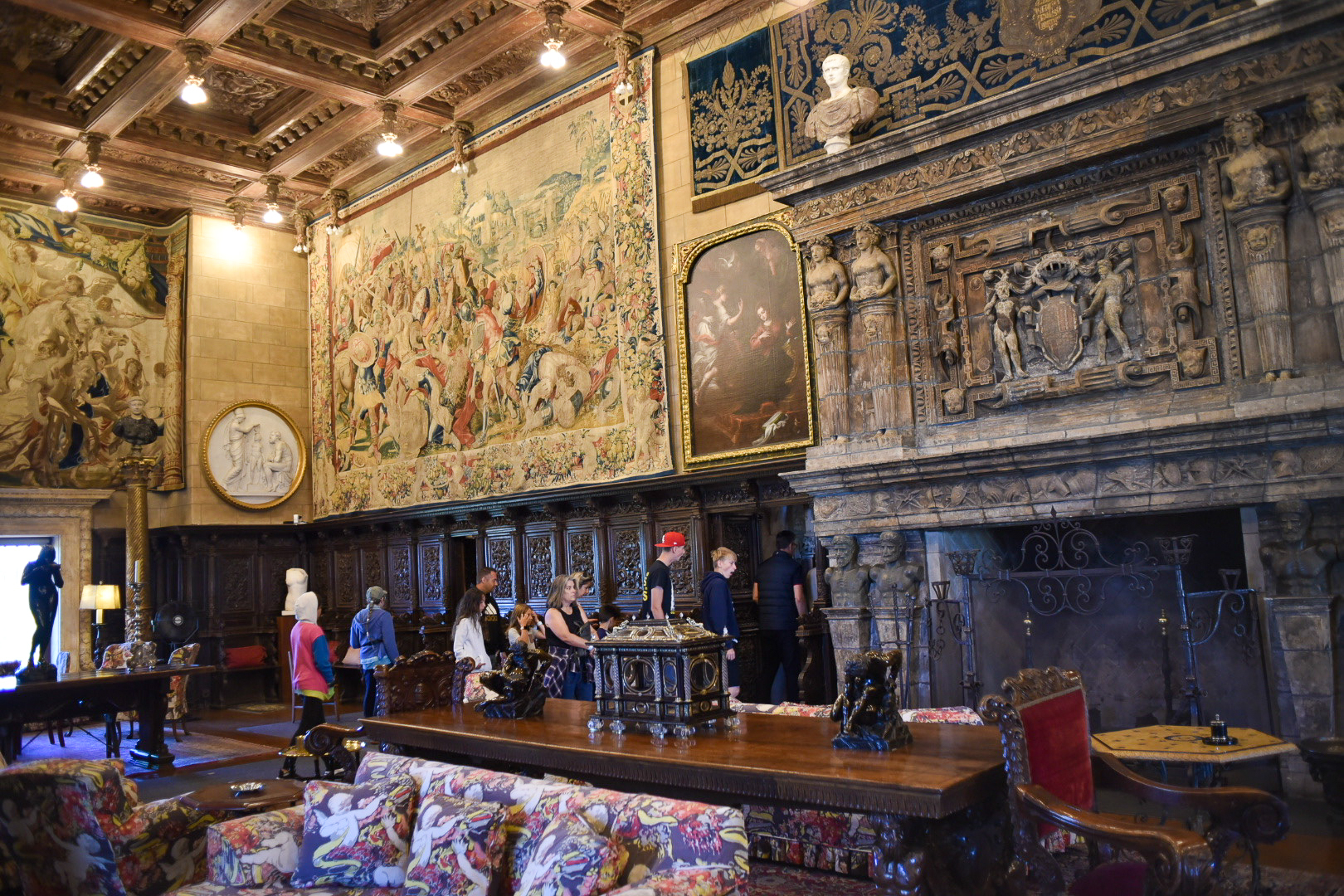
Entering the Dining room, we find this odd statue. Perhaps it made more sense in its original location at Hogwarts.
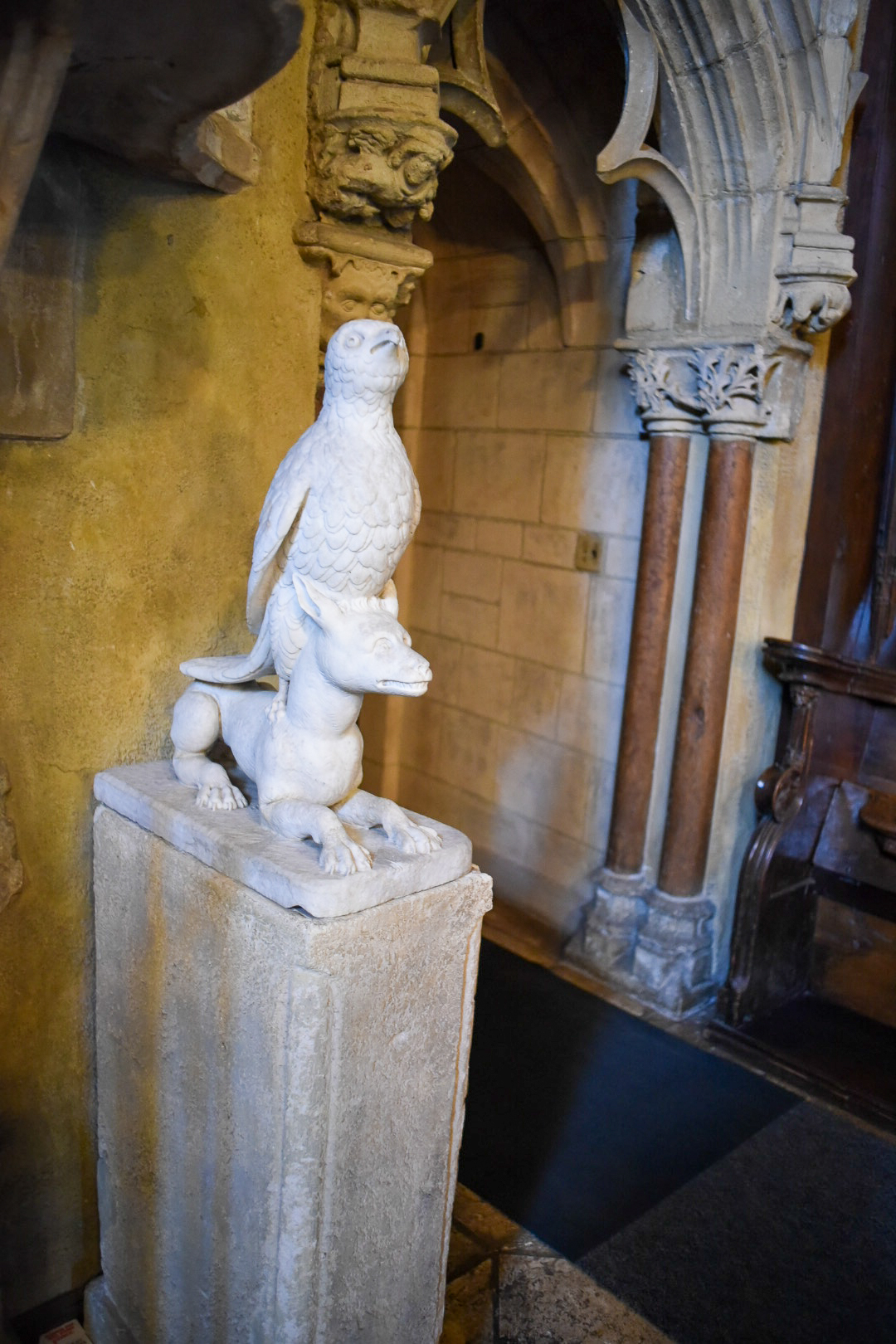

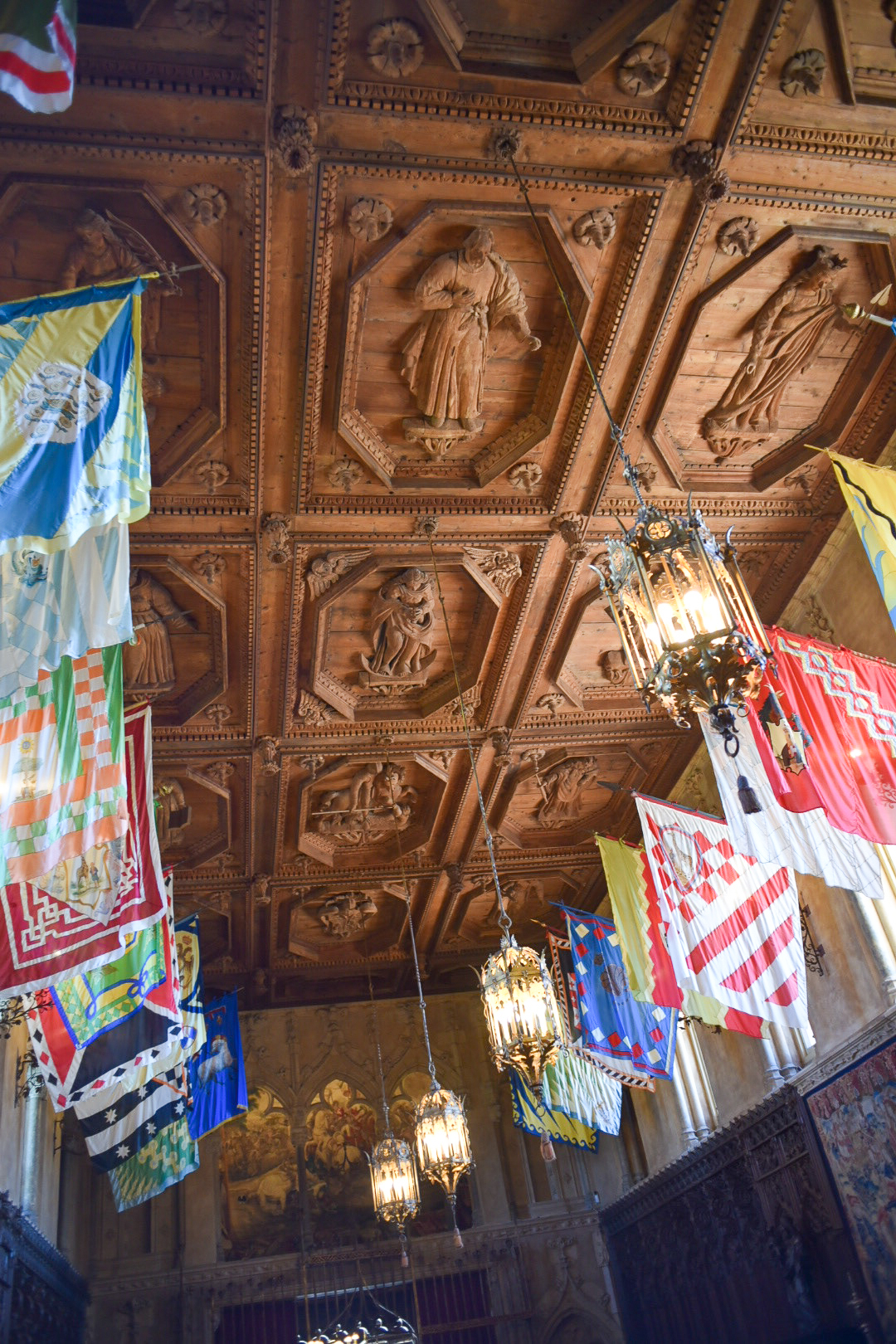
Hearst felt that paper napkins, catsup and mustard made dinner at his 50+ person table feel more like being at a ranch. Sure.
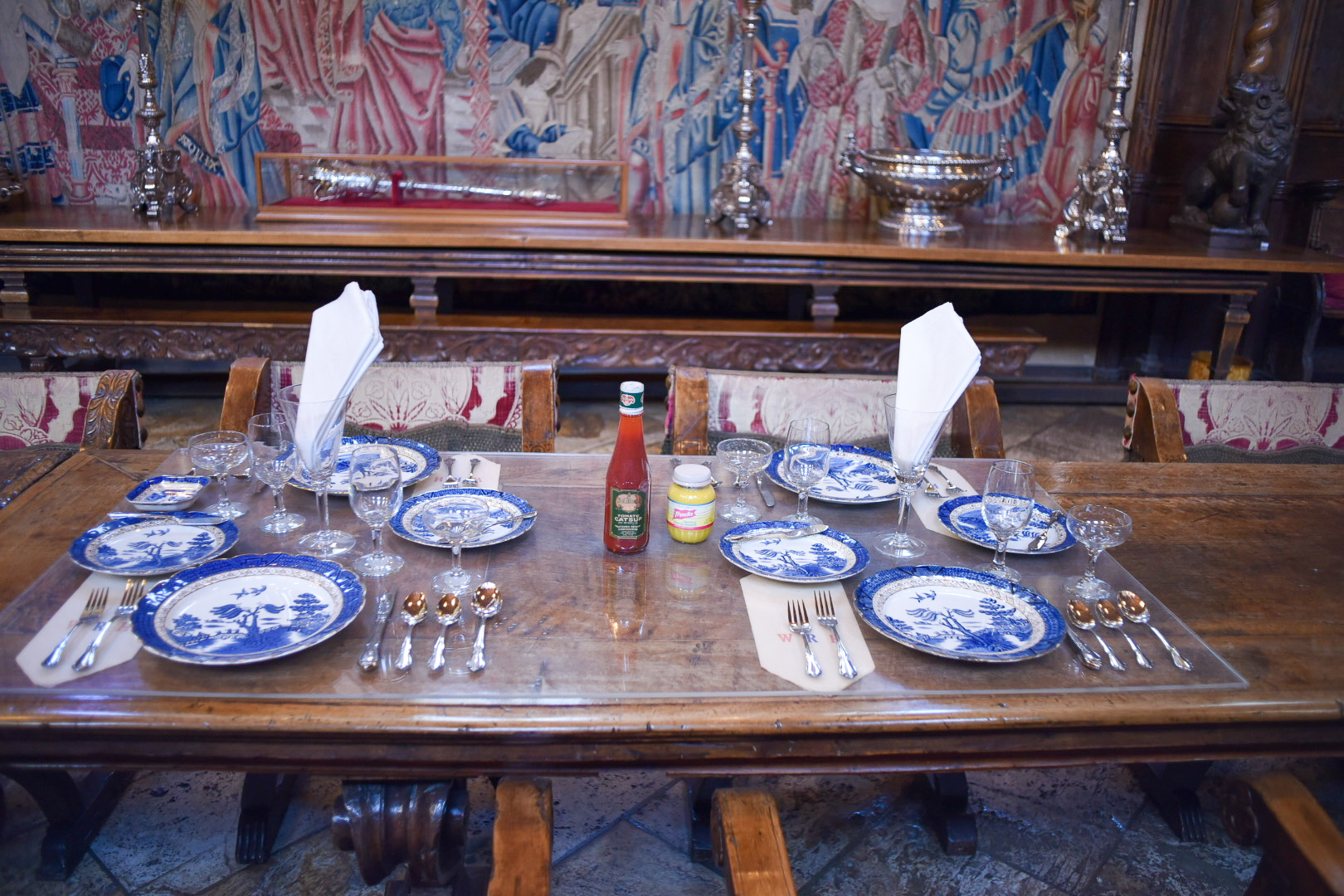
After dinner, guests could fill this cozy room with conversation and tobacco smoke. Or they could move on through to the Billiards room.
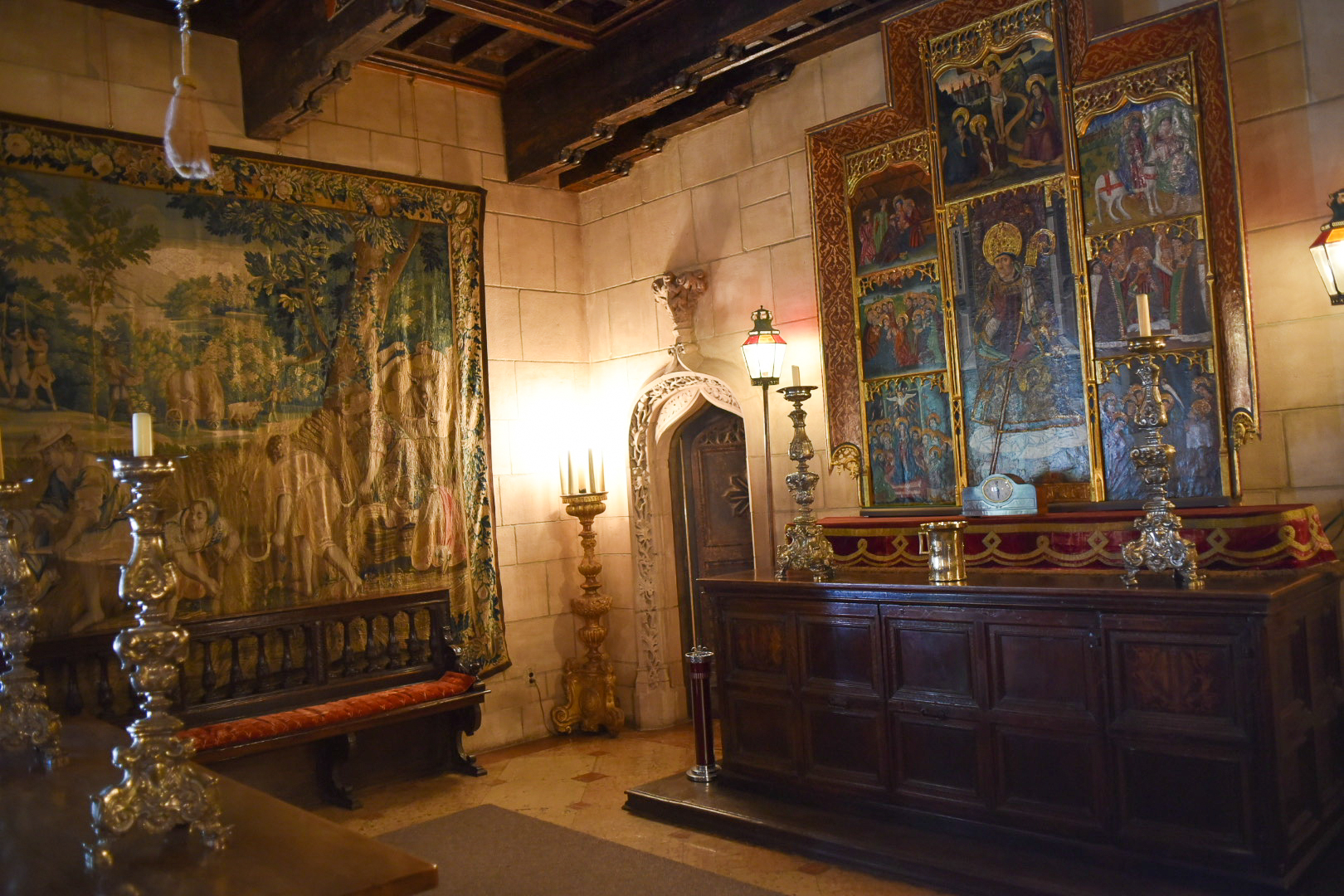
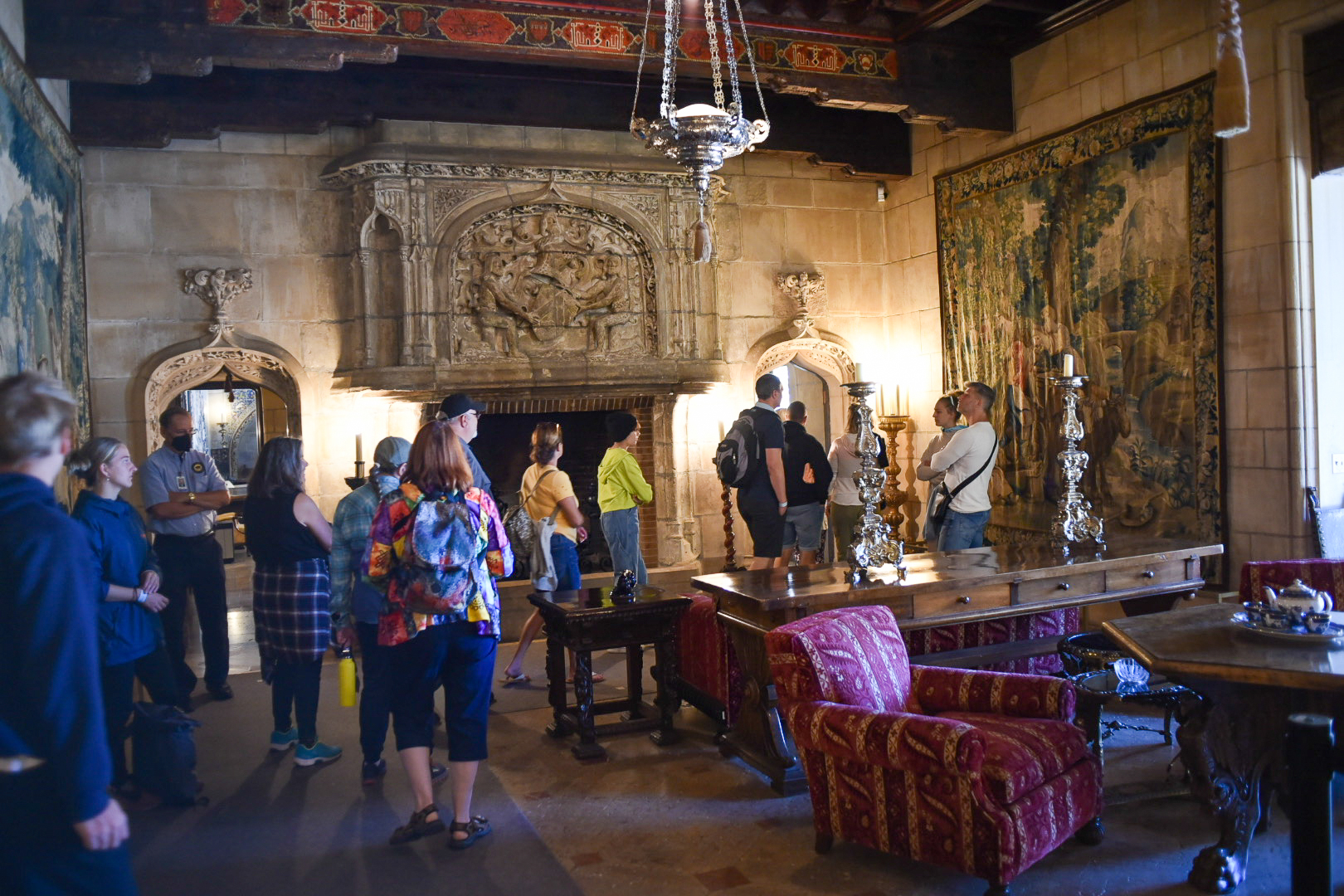

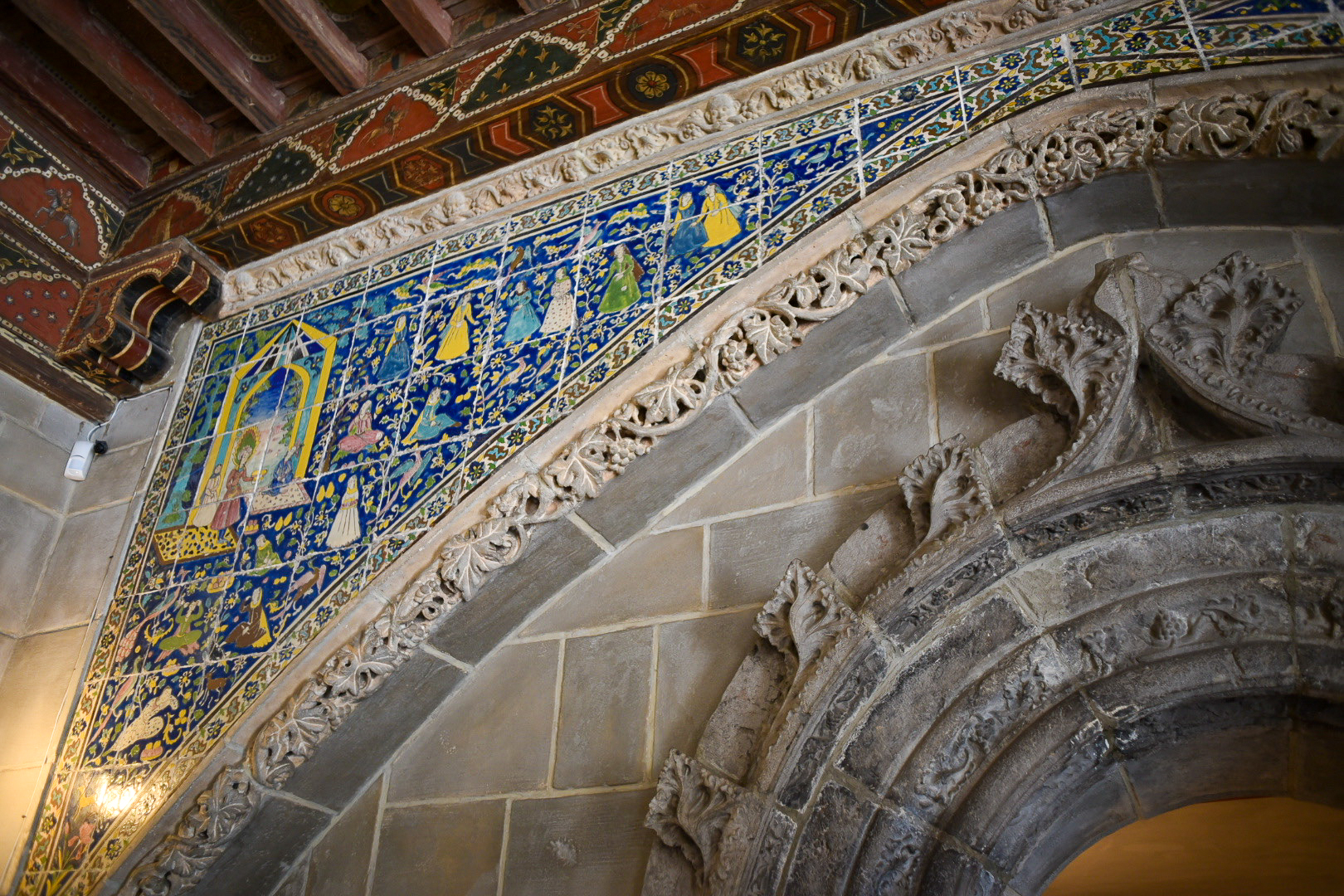
Of course there is a movie theater. Here’s one of a set of matching figures along the walls. It’s said that the face was modeled on Hearst’s mistress, Marion Davies.

Another example of perpetual revision – this is the third version of the outdoor pool. It was enlarged twice.

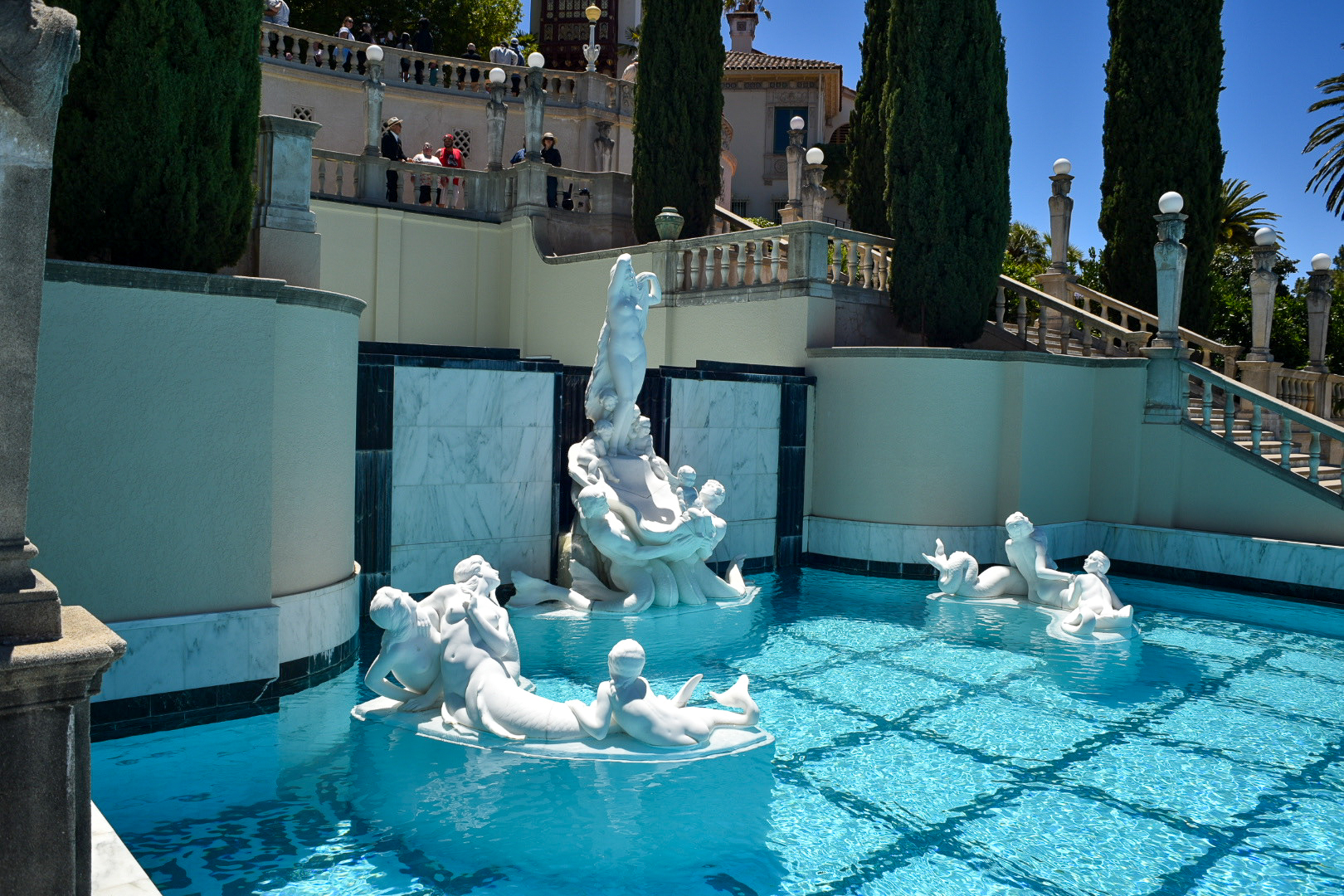

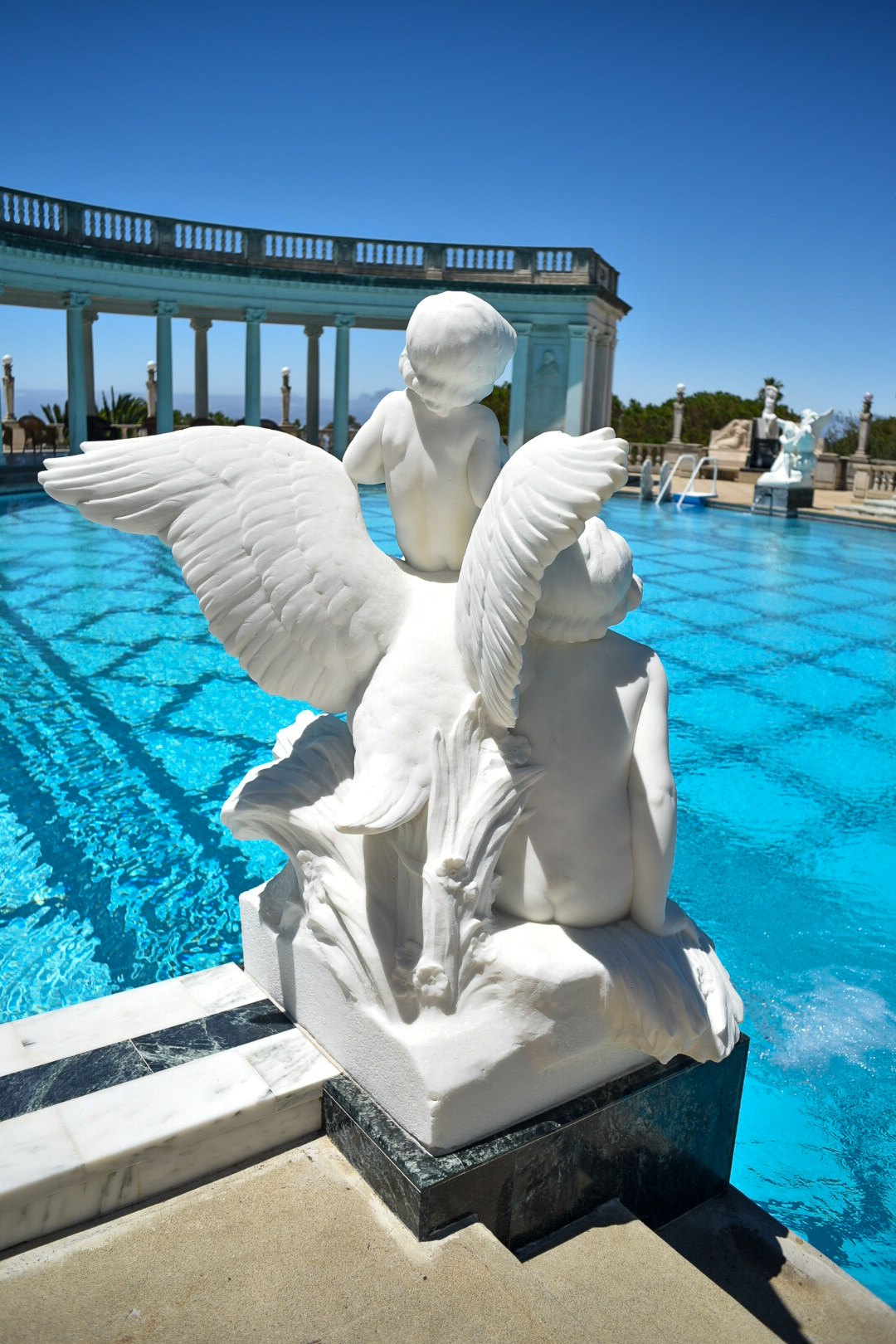
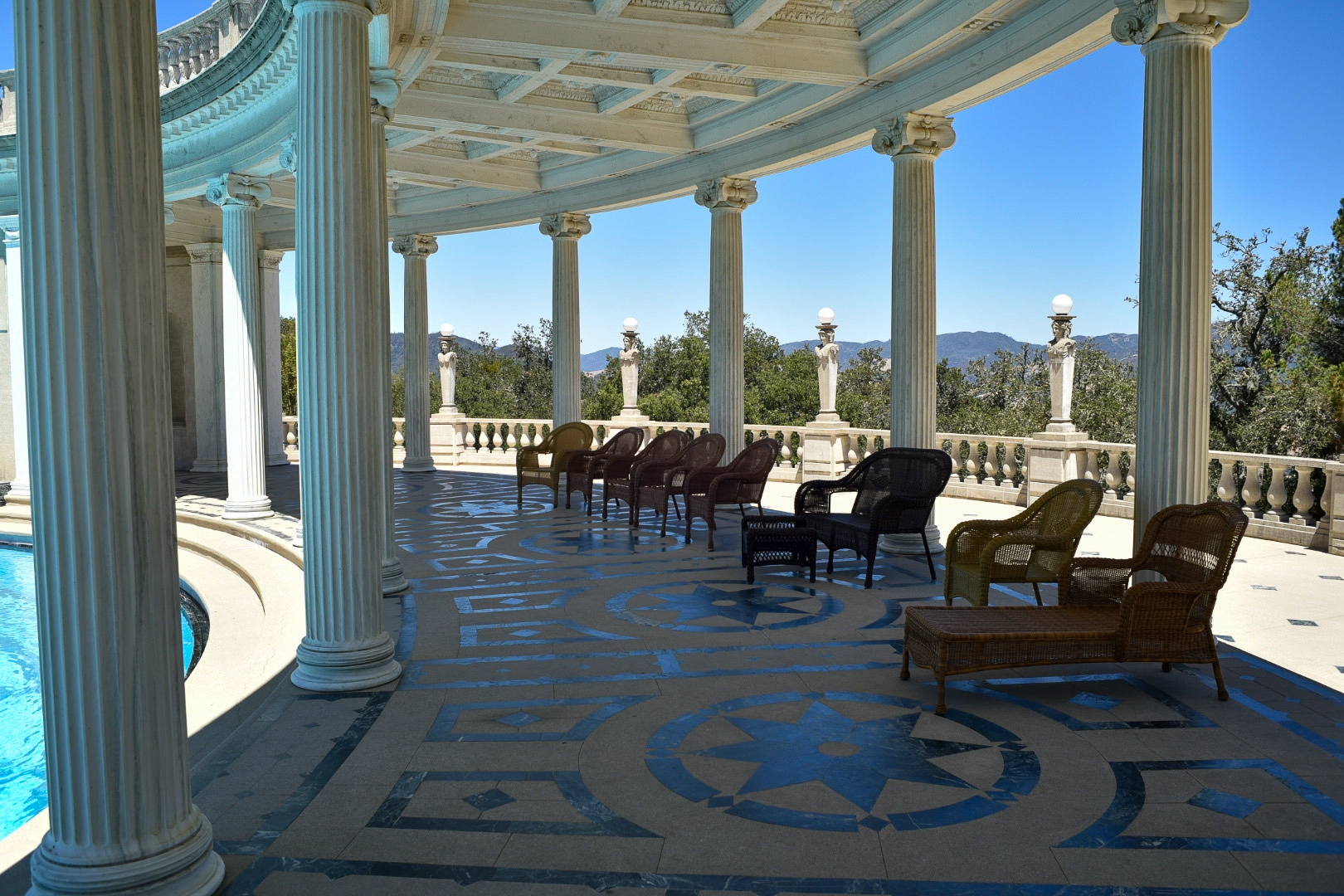
The indoor pool: the tiles are Murano glass with gold leaf.
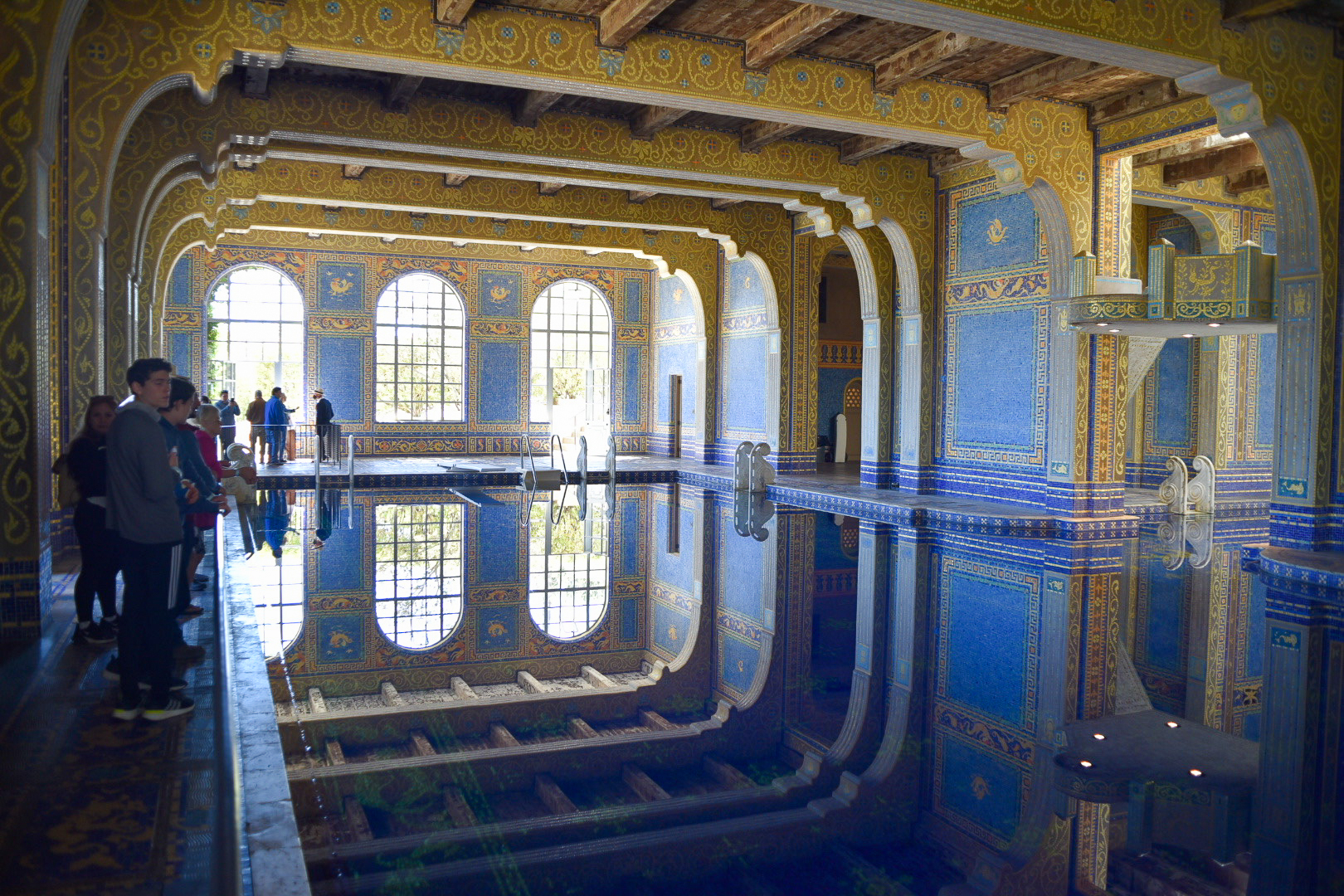
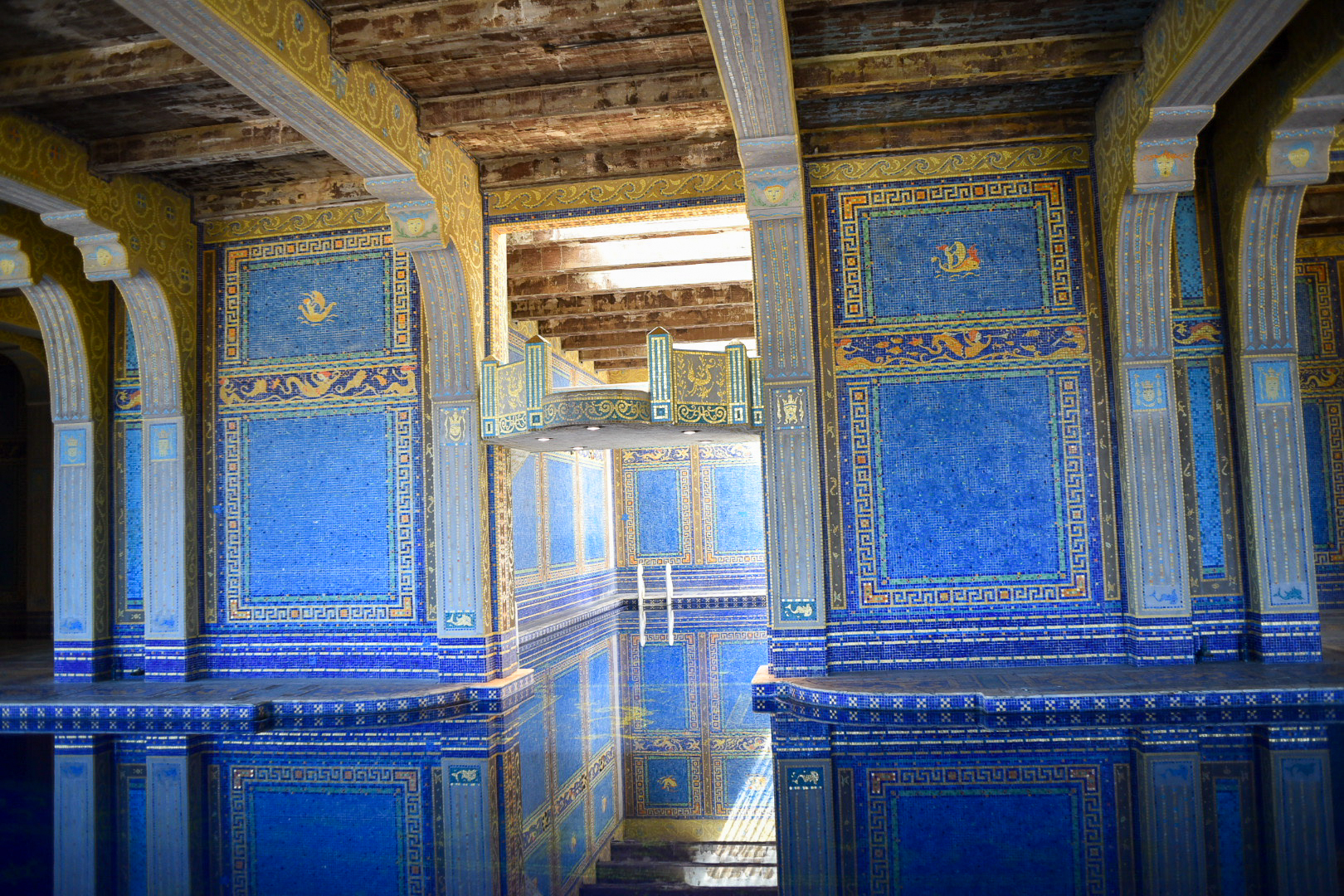
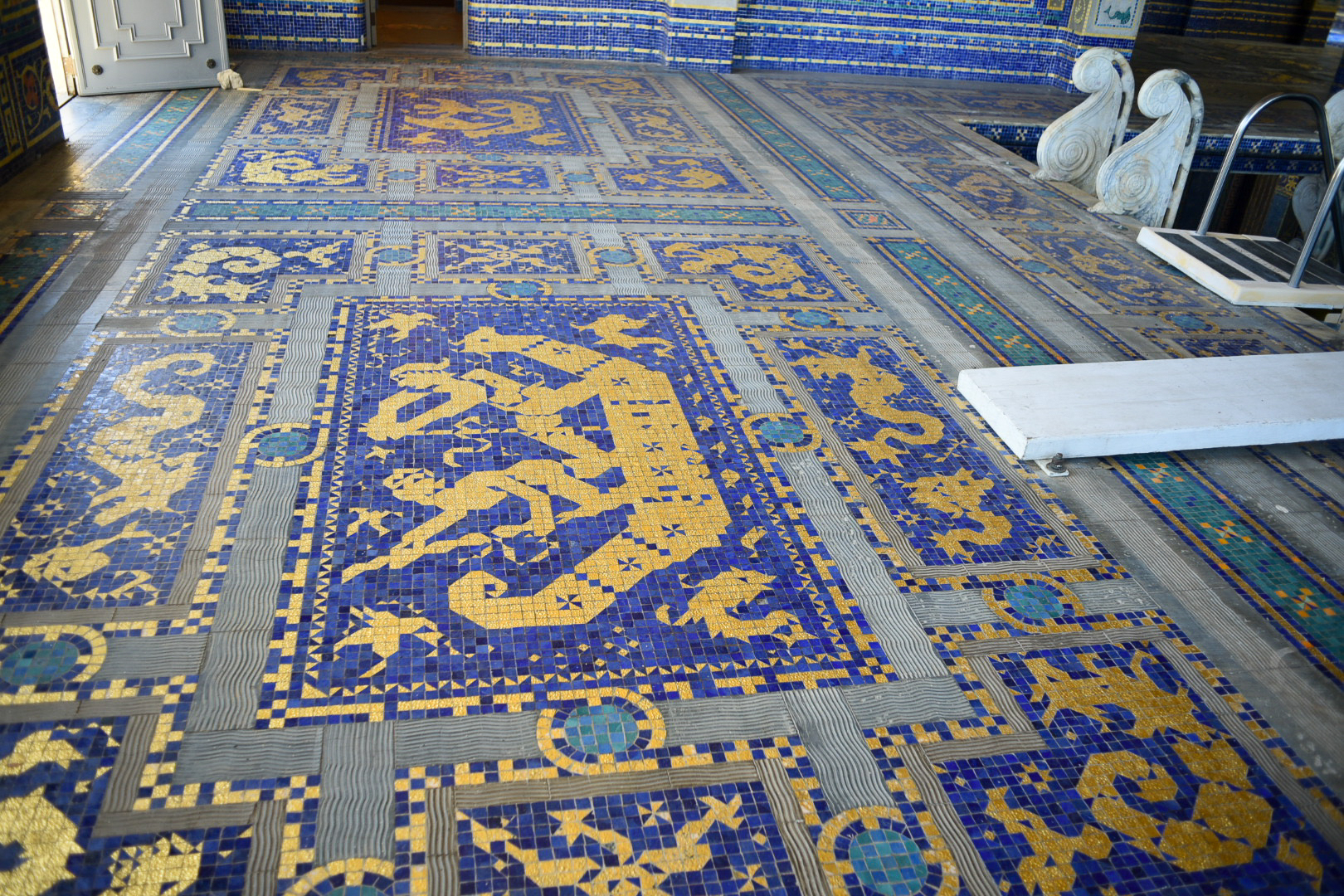
We head to our bus for the quarter-hour trip back to the Visitor Center. The road is visible in the distance. Further away is the private airstrip still used by family members when they visit the property.
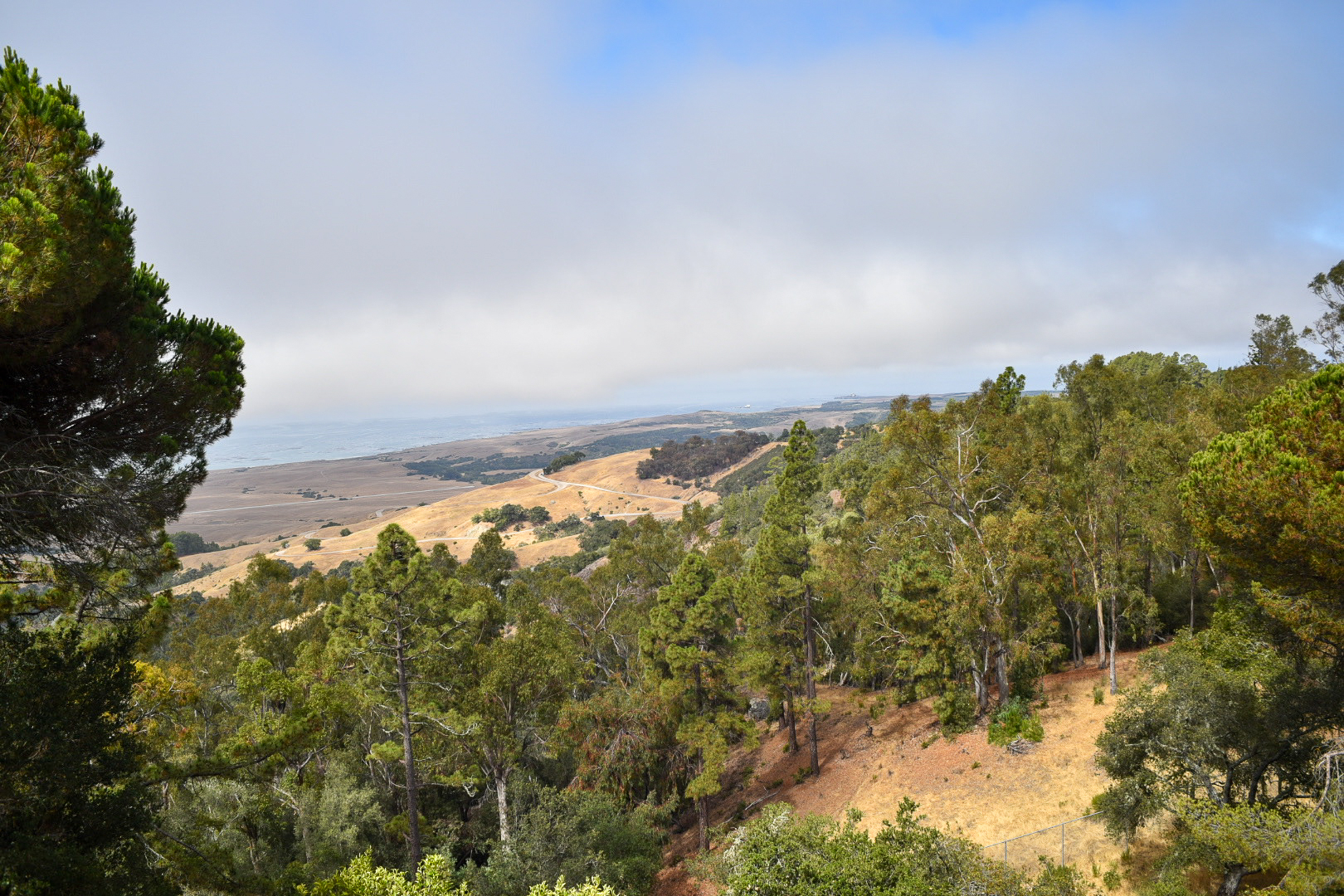
OK. As promised, my opinion. Feel free to share yours in the Comments.
I think Hearst loved the west and western life. But he looked to Europe for culture and therefore, “important” artifacts. Hearst seemed to want to recreate the experience he had as a child doing the European Grand Tour with his mother. I doubt that he would have thought it worthwhile to collect an Apache teepee or an Eskimo mask.
Rather than assemble a Disney World collection of cultural fragments never intended to exist together, perhaps Hearst should have asked himself “What would a Western American castle be like?” I’m sure that Julia Morgan would have been up to the challenge.